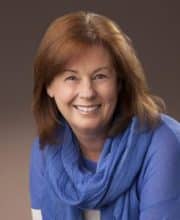Finding the right books
Home » Parent Resources » Reading with children » Finding the right books
Guest post by author Louise Park
Louise has taught primary school children of all ages and is the author of successful resources to help children crack the reading code. Her fiction work includes the best-selling children’s books Harriet Clare, Zac Power Test Drives and Boy vs Beast.
These tips are about choosing books to read for enjoyment. Beginning readers will mostly reading decodable texts for reading practice but once children move beyond that stage we want to encourage them to read a wide range of books.
Louise writes:
So much of reading success is about confidence and enjoyment. If children enjoy reading and feel a sense of success at it then they’ll keep doing it — and when they keep reading, their confidence and reading competency soars.
But, if there are too many hard words, the reader stumbles through the story, continually stopping to tackle tricky words. The attention wanders and before you know it, the book has been put down and the chances of it being picked up again are low.
So, it is absolutely critical that you find the right books for your child – books that will build rather than erode reading confidence. Books that will be enjoyed, not endured. A good book for your child is a book they can read and a book they want to read. But how do you find that?
There are three parts to the perfect-book puzzle: content, readability and the child. If you get these things right, then the rest will follow.
These tips will help you get it right!

Content is all about finding a book they want to read
- Make time to read together every day – the longer the better, but even 15 minutes is better than not at all.
- When you get there, judge a book by its cover. We all do and the covers are designed to help you know what kind of story is inside. Involve your child in the process. Have them pick covers they like the look of and then guide them in how to assess if it is the one for them. Read the back cover blurb together and then revisit the cover armed with that information.
- Now look inside! The interior of the book, its layout and design are even more important. Is the type size what your child needs? Are there lots of small and manageable chapters to foster a sense of achievement? Are there engaging illustrations that provide reading breaks? Consider the number of words per page.
Readability is all about finding a book they can read
- The perfect match between reader and text is a book pitched perfectly to give a child reading confidence as they build their literacy skills — it’s a book that they can be read with about 90% accuracy. Anything harder will more likely turn them off reading. One new word in every ten ensures comprehension, enjoyment, and further building of literacy skills and vocabulary.
- The ‘Five Finger Rule’ is one of the quickest and easiest ways to gauge whether a book is too hard. Ask your child to start reading aloud a page of the book they think they want to read. If they stumble over a word hold a finger up. Hold a finger up for every word they find tricky. If by the end of a page five fingers are up, the child has spent more time concentrating on difficult words than on reading the story and will have lost the story line of the book. The book is too hard, at least for now.
Remember to involve your child in the process all the way if you can!
- Choose the books with them and not for them. Although your guidance in the choosing process is paramount!
- Encourage them to turn the page for you, to follow on, to help show you your place when you pretend to lose it.
- Make it special and something they look forward to. Curl up in favourite places that they associate with the sharing of a fabulous book. Or try new places, like on a towel under a tree or under a sheet thrown over the clothesline, inside a toy tent pitched in the living room. After a while, they’ll grab a book and race there before you!
- Read carefully and deliberately. And be sure to explore the pictures with them as well as the words.
- Never underestimate the value of them following along with an audio recording. It doesn’t matter who reads as long as you are together enjoying it all.
- Read aloud to your child, read along with them, read with them. Stop and recap along the way. Ask questions about the story.
- And finally, easier said than done, try not to get caught up in other children’s reading abilities. It’s all about your child and their reading journey!
This Quick-Check Book Matrix looks at some of the text features that will help you assess a book for a reluctant, competent or enthusiastic reader.
| Beginner and struggling readers | Moving to competent and enthusiastic readers | |
|---|---|---|
| Length |
|
|
| Words |
|
|
|
| |
| Illustrations |
|
|
| Content |
|
|
For more information, visit louisepark.com.au
